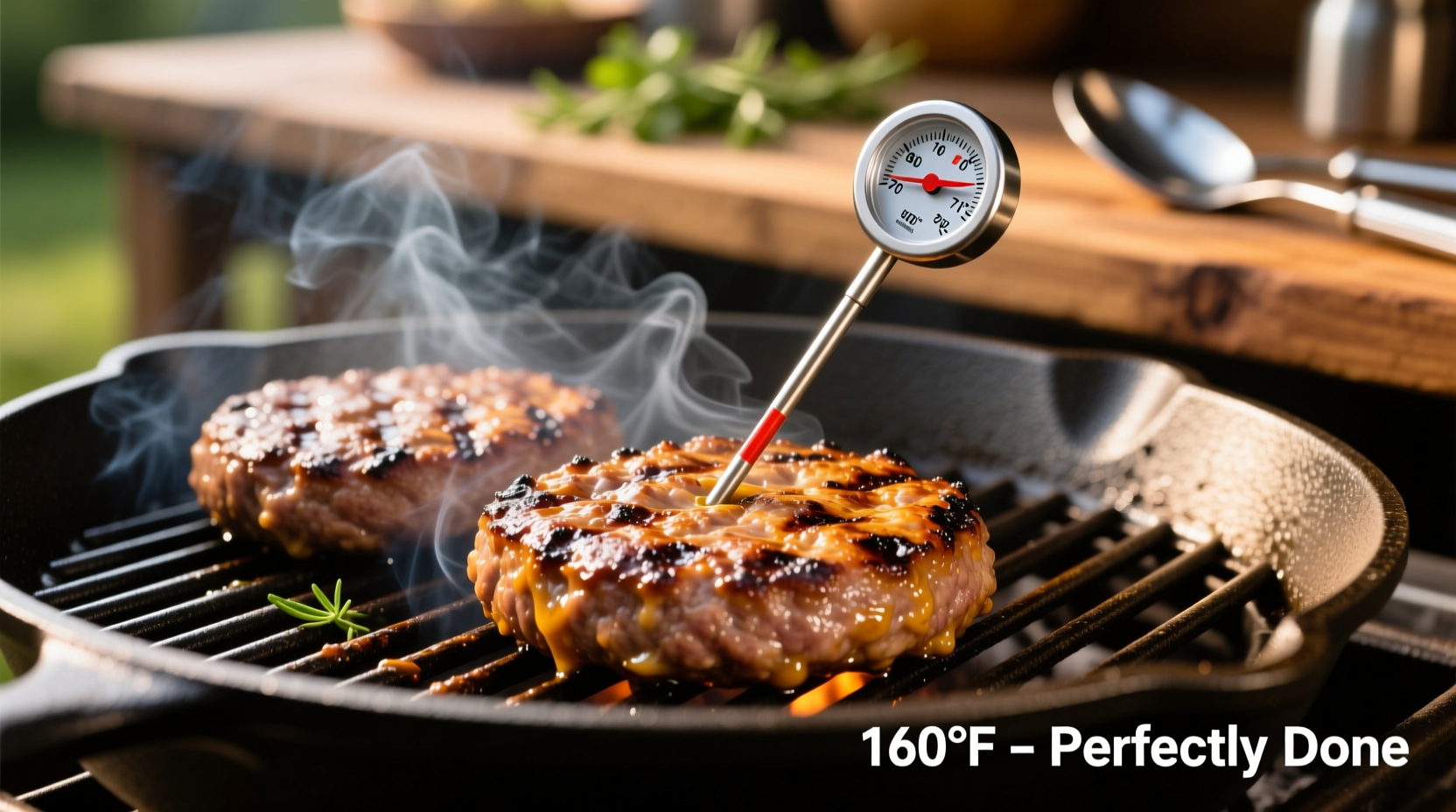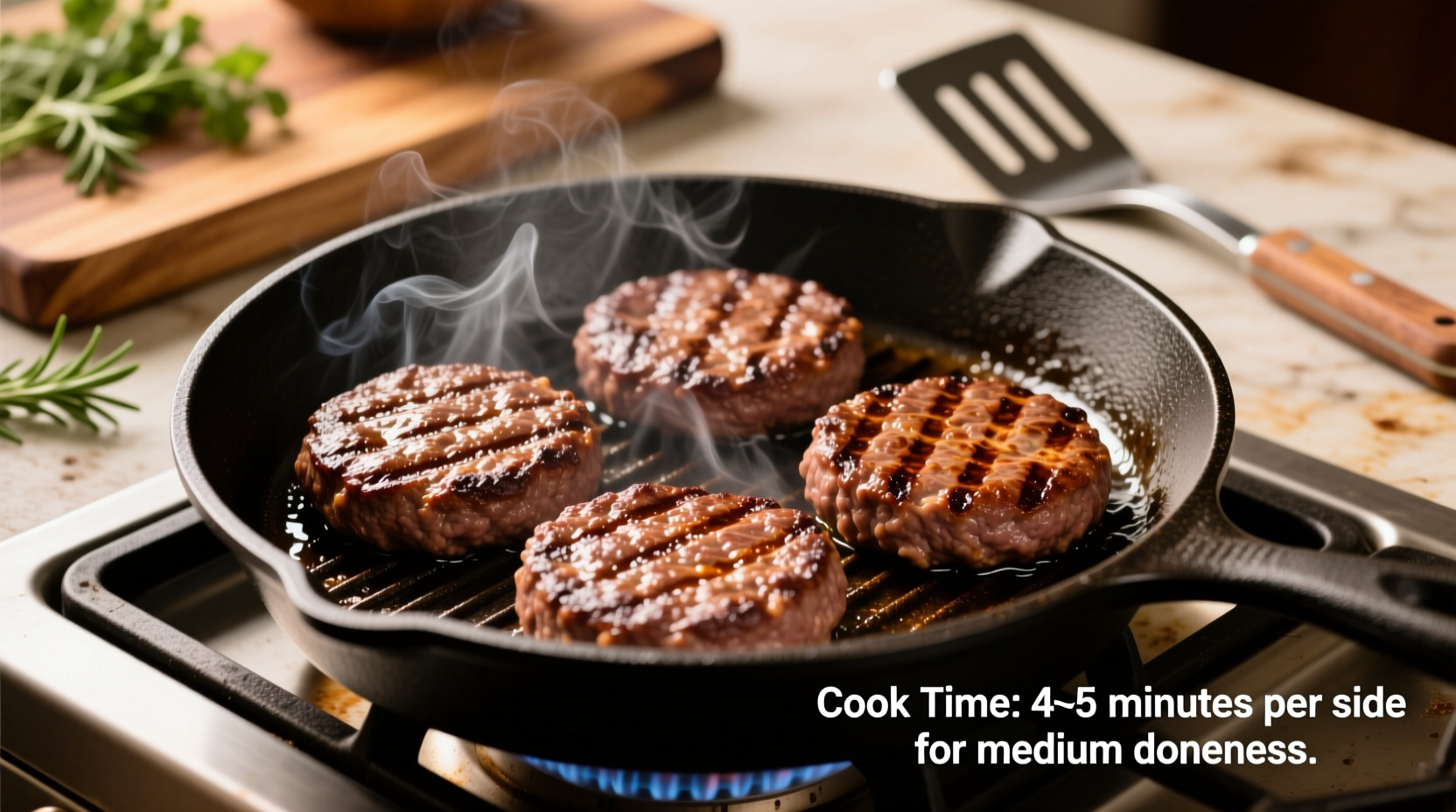Getting hamburger patty cooking time right separates decent burgers from exceptional ones. As someone who's cooked thousands of burgers in professional kitchens and home settings, I've learned that timing depends on multiple factors beyond just minutes on the clock. This guide delivers precise cooking times based on patty thickness, cooking method, and desired doneness—plus the critical food safety information you need.
Why Perfect Timing Matters for Hamburger Patties
Undercooked ground beef risks foodborne illness, while overcooked patties become dry and tough. The USDA recommends cooking ground beef to 160°F (71°C) internal temperature to eliminate harmful bacteria like E. coli. But reaching this temperature doesn't have to mean sacrificing juiciness—if you understand the relationship between time, heat, and patty characteristics.
Key Factors That Determine Cooking Time
Before we dive into specific timing, understand these four critical variables that affect how long to cook hamburger patties:
- Patty thickness: The single biggest factor—thicker patties need more time
- Cooking surface temperature: Medium-high (375-400°F) works best for searing
- Starting temperature: Cold patties from the fridge need slightly longer
- Desired doneness: Safety requires 160°F, but timing varies based on preference
Standard Cooking Times for Different Patty Thicknesses
These times assume medium-high heat (375-400°F) on grill or stovetop. Always verify with a meat thermometer for safety.
| Patty Thickness | Rare (Not Recommended) | Medium (Not Recommended) | Well Done (Recommended) | Total Time |
|---|---|---|---|---|
| 1/4-inch | 1-2 min/side | 2-3 min/side | 3 min/side | 6 minutes |
| 1/2-inch | 2-3 min/side | 3-4 min/side | 4-5 min/side | 8-10 minutes |
| 3/4-inch | 3-4 min/side | 4-5 min/side | 5-6 min/side | 10-12 minutes |
| 1-inch | 4-5 min/side | 5-6 min/side | 6-7 min/side | 12-14 minutes |
Note: USDA Food Safety and Inspection Service requires ground beef to reach 160°F (71°C) for safety. Rare and medium cooking temperatures shown are for informational purposes only and not recommended for ground beef.
Step-by-Step Cooking Process for Perfect Burgers
Preparation: Setting Up for Success
Proper preparation prevents common timing mistakes:
- Form patties 1/2 inch larger than your bun diameter (they shrink 20-25% during cooking)
- Create a slight dimple in the center of each patty to prevent bulging
- Season generously with salt and pepper just before cooking (salting earlier draws out moisture)
- Let patties sit at room temperature for 15-20 minutes before cooking for more even cooking
Cooking: Timing by Method
Stovetop (Cast Iron or Heavy Skillet)
For 1/2-inch patties: Heat oil in skillet over medium-high heat until shimmering (about 2 minutes). Place patties in skillet without crowding. Cook undisturbed for 3-4 minutes until well-seared. Flip and cook another 3-4 minutes. For cheeseburgers, add cheese during the last minute of cooking. USDA guidelines confirm ground beef must reach 160°F.
Grill
Preheat grill to medium-high (375-400°F). Clean and oil grates. Place patties on grill and cook covered for 3-4 minutes per side for 1/2-inch patties. Avoid pressing down with spatula—that squeezes out precious juices. For thicker patties (3/4-inch+), use two-zone cooking: sear over direct heat, then move to indirect heat to finish cooking without burning.
Oven (For Multiple Patties)
Preheat oven to 400°F. Place patties on wire rack over baking sheet. Bake 8-12 minutes depending on thickness, flipping halfway through. Finish under broiler for 1-2 minutes for better browning.

How to Tell When Hamburger Patties Are Done
While timing provides a guideline, these methods give definitive doneness confirmation:
- Meat thermometer (most reliable): Insert into thickest part—160°F is required for safety
- Touch test: Well-done patties feel firm with little give
- Juice color: Clear juices indicate proper cooking (but not as reliable as thermometer)
- Resting time: Let patties rest 3-5 minutes after cooking—internal temperature will rise 5-10°F
Never rely solely on color or cooking time—only a thermometer guarantees safety. The CDC confirms that ground beef can appear brown before reaching safe temperatures, creating a false sense of security.
Common Timing Mistakes and How to Fix Them
- Mistake: Flipping too early Solution: Wait until patties release easily from the cooking surface (about 3 minutes)
- Mistake: Pressing down on patties Solution: Resist the urge—this squeezes out 30% more juices
- Mistake: Cooking cold patties straight from fridge Solution: Let patties sit at room temperature for 15-20 minutes first
- Mistake: Overcrowding the cooking surface Solution: Leave 1-2 inches between patties for proper heat circulation
Food Safety Essentials for Hamburger Patties
Unlike whole cuts of meat, ground beef distributes surface bacteria throughout the meat, making proper cooking essential:
- Always cook ground beef to 160°F internal temperature (71°C)
- Use a food thermometer—never rely on color or cooking time alone
- Clean surfaces and utensils that contact raw meat with hot, soapy water
- Refrigerate leftovers within 2 hours (1 hour if temperature exceeds 90°F)
- Never partially cook patties to finish later—this creates dangerous bacterial growth conditions
According to the USDA Food Safety and Inspection Service, ground beef must reach 160°F to destroy harmful bacteria like E. coli and Salmonella that can cause serious foodborne illness.
Pro Tips for Juicy, Flavorful Hamburger Patties
- Add 1-2 tablespoons of ice-cold water per pound of ground beef before forming patties to maintain moisture
- Use 80% lean/20% fat ground beef for optimal juiciness and structure
- Cook over consistent medium-high heat—not too hot (causes burning) or too low (steams instead of sears)
- Let patties rest 3-5 minutes after cooking—this allows juices to redistribute
- For thicker patties, create an indentation in the center to prevent doming during cooking
Troubleshooting Common Hamburger Patti Issues
Dry, Overcooked Patties
Cause: Overcooking, using lean meat, or pressing during cooking Solution: Reduce cooking time by 30-60 seconds per side, use higher fat content beef, and never press patties
Raw Center Despite Proper Timing
Cause: Inconsistent heat, too-thick patties, or cold center Solution: Create thinner patties, use two-zone cooking method, or finish in 300°F oven after searing
Patties Falling Apart
Cause: Too much fat, over-handling, or insufficient binder Solution: Use 80/20 ground beef, handle meat minimally, and consider adding 1 egg per pound for binding











 浙公网安备
33010002000092号
浙公网安备
33010002000092号 浙B2-20120091-4
浙B2-20120091-4